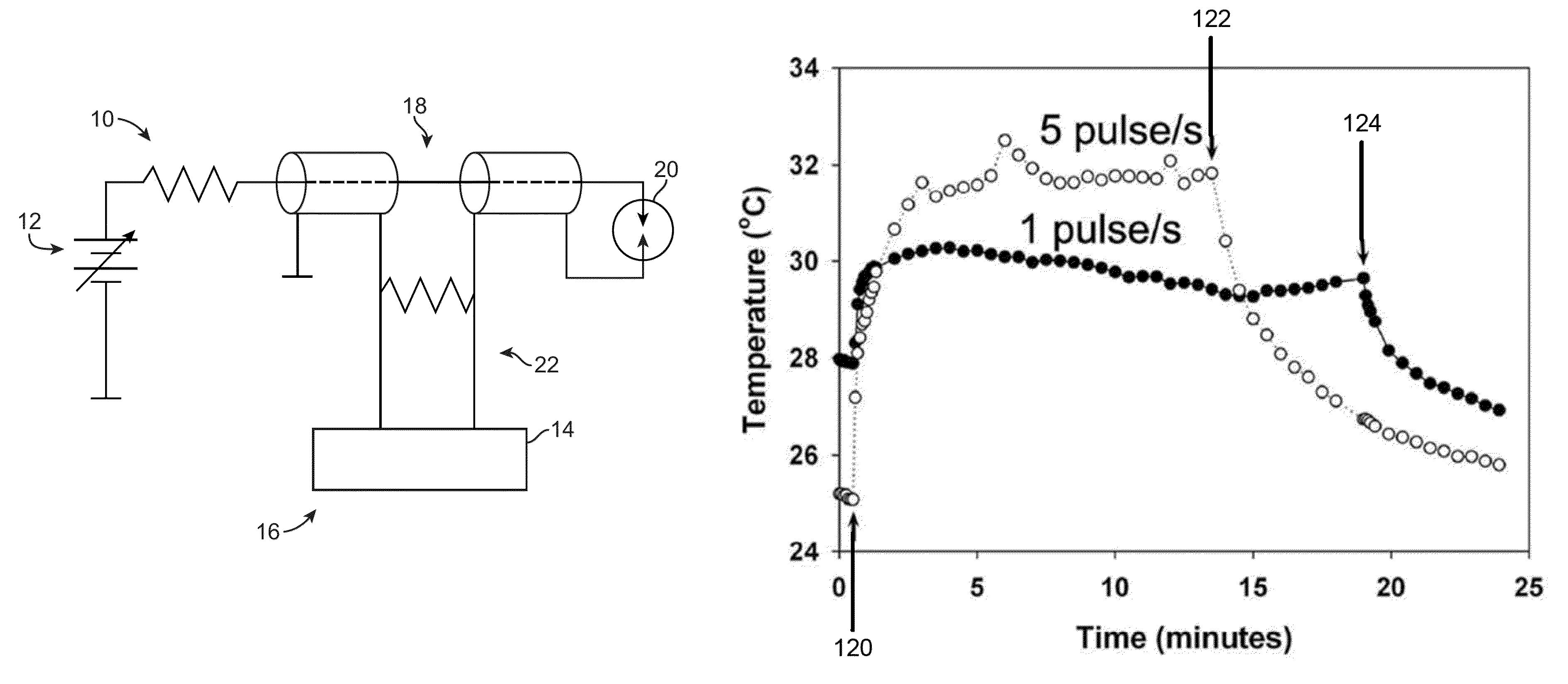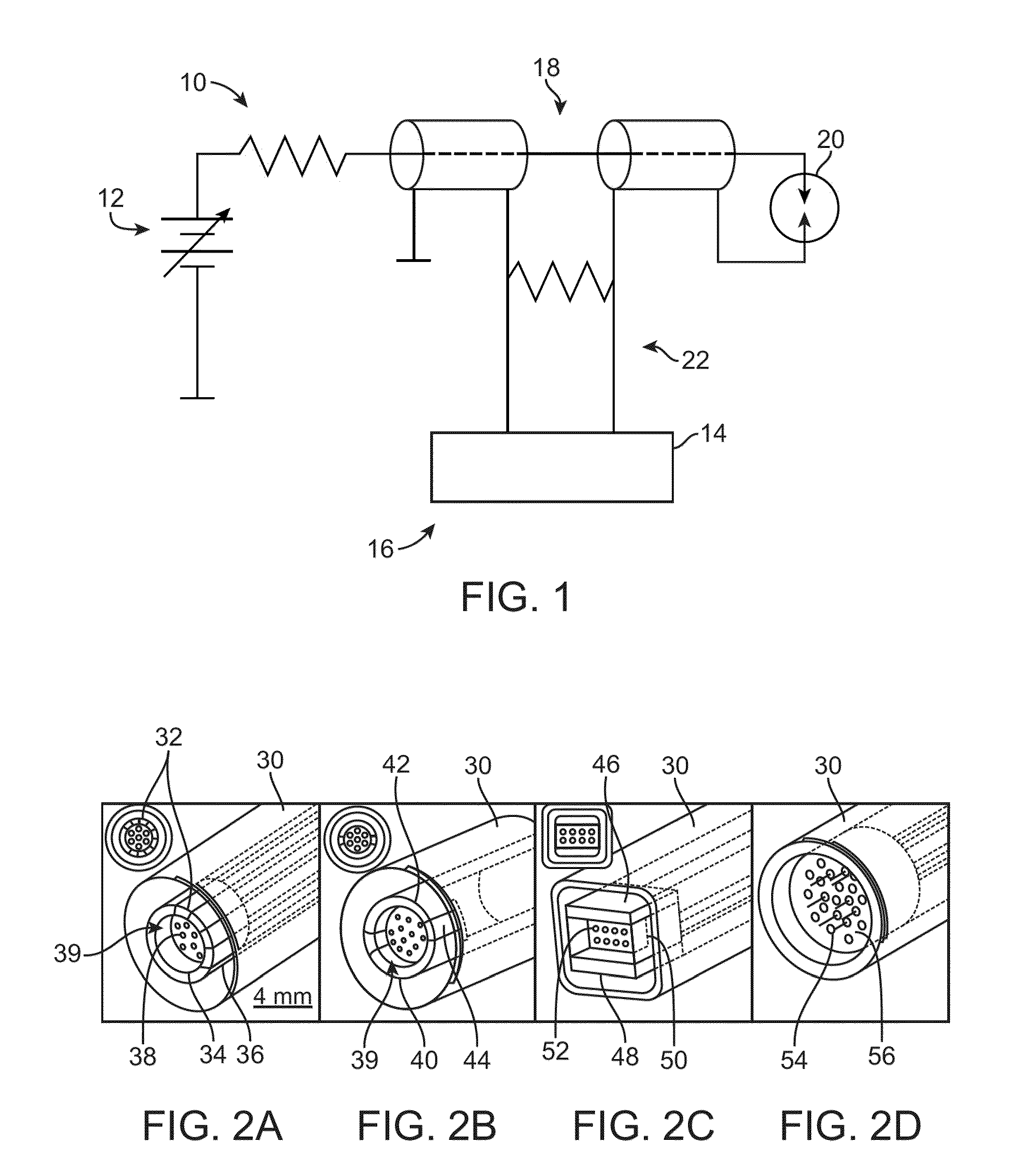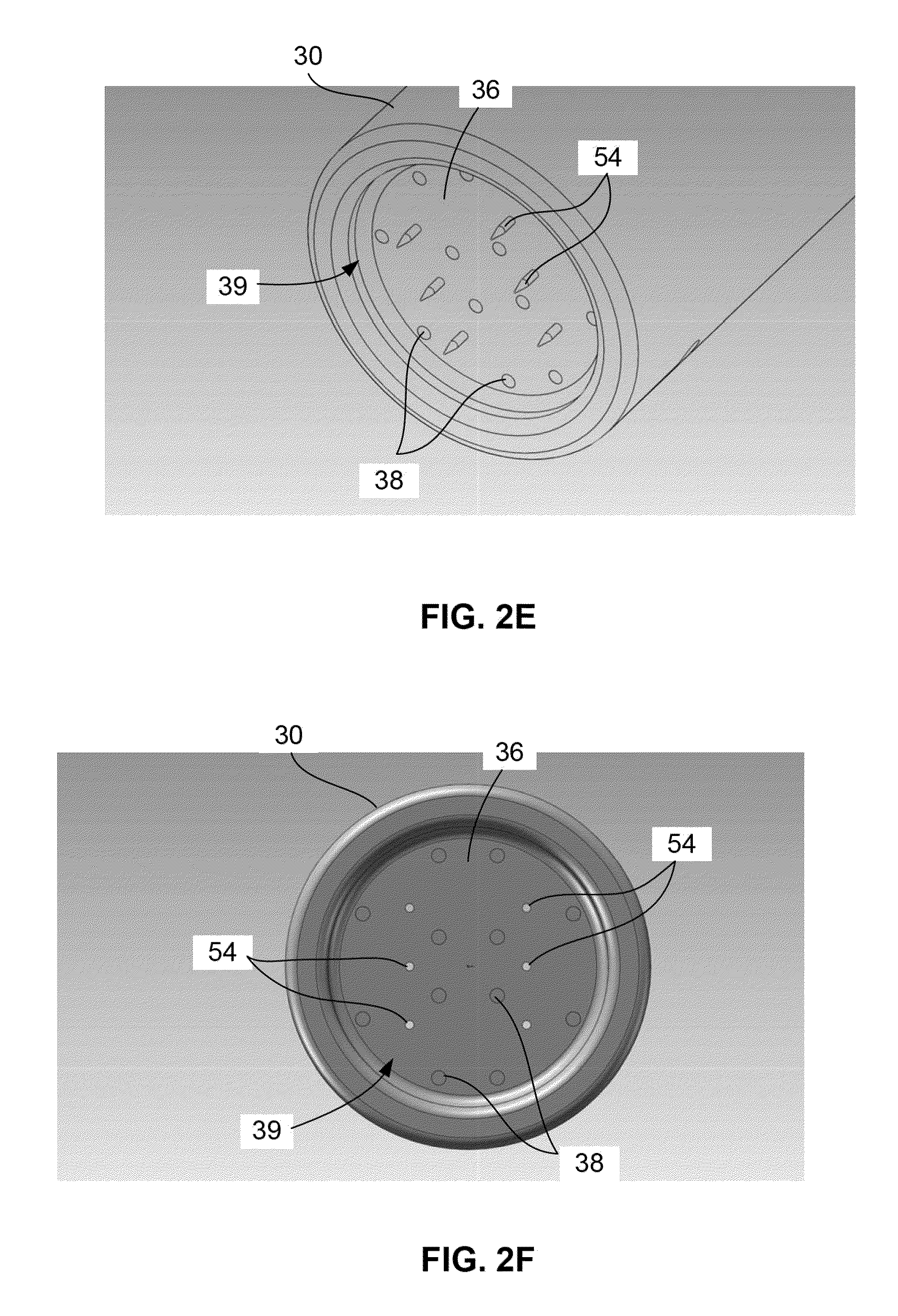Nanosecond pulsed electric field parameters for destroying tumors with a single treatment
a pulsed electric field and tumor technology, applied in the field of nanosecond pulsed electric field treatment methods and devices, can solve the problem that the field may not pass into the tumor effectively
- Summary
- Abstract
- Description
- Claims
- Application Information
AI Technical Summary
Benefits of technology
Problems solved by technology
Method used
Image
Examples
example 1
[0071]In optimizing the device, multiple experiments have shown that tumors, such as melanoma tumors, may be eliminated utilizing nsPEF when exposed to 100 ns long pulses having a 15 ns rise time where the minimum number of pulses range from, e.g., 1500 to 2000 pulses, as illustrated in the chart of FIG. 10 which shows the Optimum Pulse Number where a majority of tumors were successfully treated after a single treatment when pulsed with at least 1500 to 2000 pulses. Accordingly, as shown in the graph of FIG. 11, the Percent Efficacy after one treatment is shown to increase from 1500 pulses and higher.
[0072]As also indicated in the chart of FIG. 12 which illustrates Optimum Amplitude of the pulses, the number of tumors successfully treated after a single treatment begins to rise at higher amplitudes, e.g., from 25 kV / cm. Thus, the minimum pulse amplitude observed is 30 kV / cm in this example while the optimum pulse amplitude is 40 kV / cm or greater in this example for effectively treat...
example 2
[0074]In this particular example, Murine B16-F10 melanoma cells transfected with enhanced green fluorescent protein (eGFP) were obtained and stored in liquid nitrogen until use. These cells were cultured and injected into 4-6 week old female Nu / Nu mice (immunodeficient, hairless, albino) using standard procedures at four injection sites each. Tumors were detected visually by the bulges they produced and by GFP detection under fluorescent microscopy.
[0075]Various suction electrode assemblies, shown in FIG. 13, were used where electrode assemblies 110, 112, and 114 each had a recessed cavity with an inner diameter of about 4 mm and a depth of about 2 mm while the electrode assembly 116 utilized an array of needles positioned within the recessed cavity where a distance between the center needle and each of the outer needles was about 2 mm. In each of the assemblies, one or more electrodes 118 were used to discharge the energy into the treated tissue while the remaining electrodes funct...
example 3
[0082]Typical melanoma responses to nsPEF therapy in the 10-25 kV / cm range were recorded where four melanomas on one mouse were treated with either 10, 15, 20 or 25 kV / cm nsPEF (2000 pulses, 100 ns, 7 Hz). The GFP fluorescence at each respective pulse amplitude over a period of 0, 1, 6, and 8 days were recorded, as shown in FIG. 21, as were the trans-illumination, as shown in FIG. 22, and reflected light images, as shown in FIG. 23. The temperature increase inside a tumor over a period of several minutes during nsPEF application were also recorded, as shown in FIG. 24.
[0083]A pulse amplitude of 30 kV / cm with 100 ns long pulses were applied beginning at the indicated frequency 120 with frequency of 1 Hz and 5 Hz. Pulsing was stopped at the indicated frequency 122 for 5 Hz and at 124 for 1 Hz. The 1 Hz pulse application increased tumor temperature by 2° C. while the 5 Hz pulse application increased the temperature by 7° C.
[0084]The appearance of nsPEF-treated skin on the indicated day...
PUM
 Login to View More
Login to View More Abstract
Description
Claims
Application Information
 Login to View More
Login to View More - R&D
- Intellectual Property
- Life Sciences
- Materials
- Tech Scout
- Unparalleled Data Quality
- Higher Quality Content
- 60% Fewer Hallucinations
Browse by: Latest US Patents, China's latest patents, Technical Efficacy Thesaurus, Application Domain, Technology Topic, Popular Technical Reports.
© 2025 PatSnap. All rights reserved.Legal|Privacy policy|Modern Slavery Act Transparency Statement|Sitemap|About US| Contact US: help@patsnap.com



